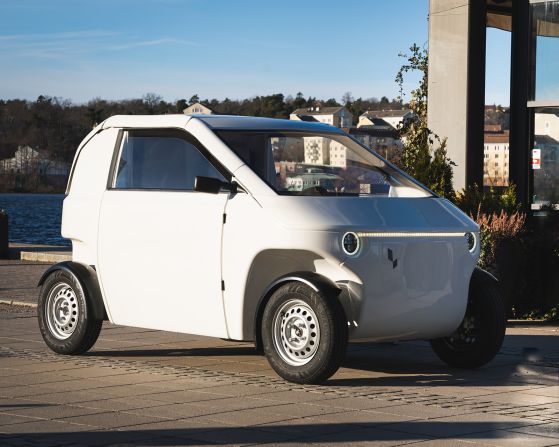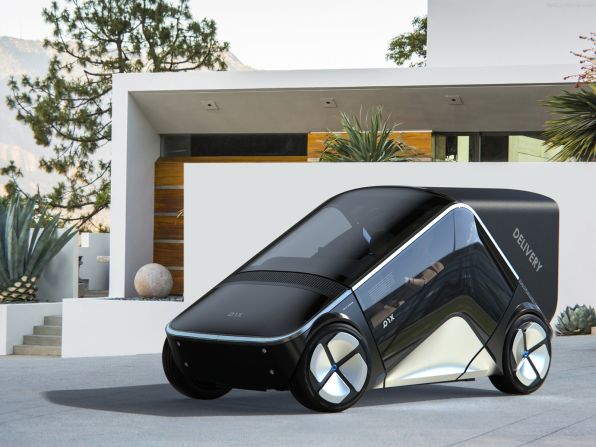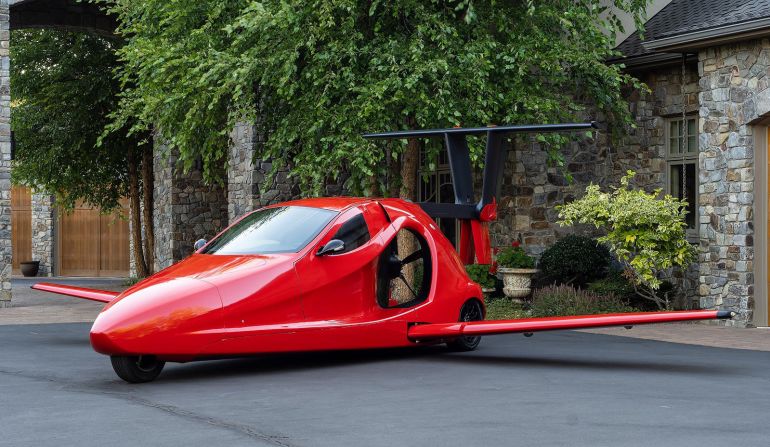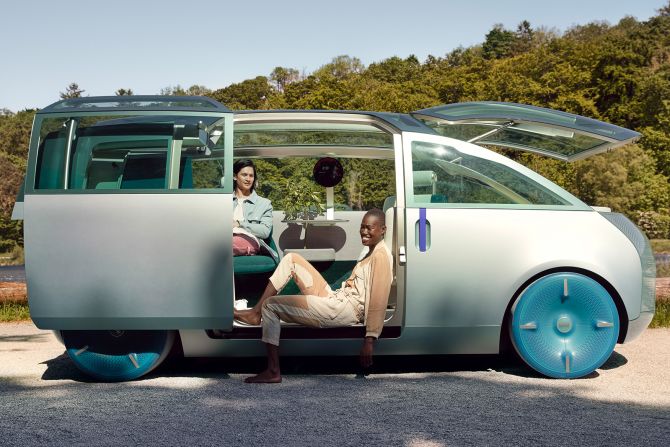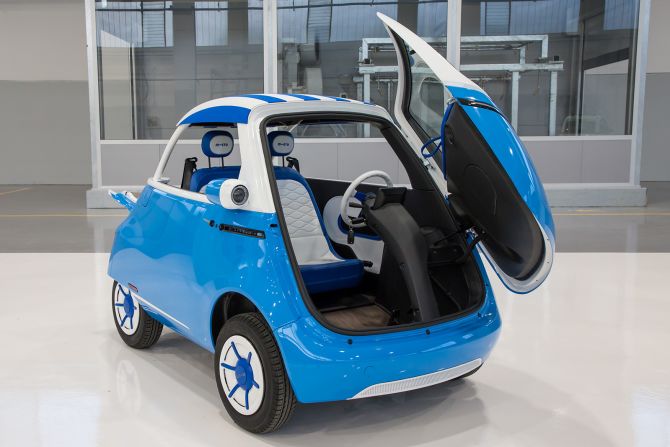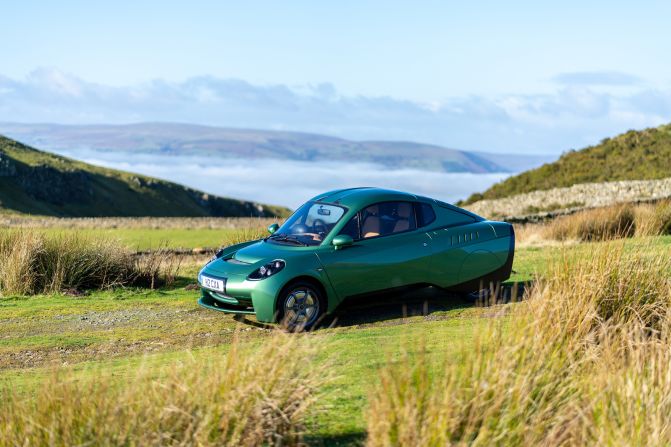Parked at the curbside of a tree-lined street, Luvly O looks a lot like any other small car. Boxy but sleek, the modern-classic aesthetic of the cream-colored vehicle embodies Scandi minimalism. It wouldn’t look out of place in an IKEA showroom — for more reasons than one.
That’s because, much like the products sold by the Swedish furniture giant, it’s designed to be delivered to its destination flat-packed.
Stockholm-based startup Luvly, founded in 2015, says its debut, ready-to-assemble car is so small and light that it can significantly reduce the carbon emissions associated with shipping.
In addition to the novel flat-pack delivery, Luvly is hoping that the electric car’s other features – including its super-light frame and swappable batteries – will make sustainable transport more affordable, says Håkan Lutz, Luvly CEO and co-founder.
Weighing under 450 kilograms (992 pounds) — less than one-quarter of the weight of the average modern car — Luvly has a range of 100 kilometers (62 miles) and a top speed of 90 kilometers (55 miles) per hour, which Lutz says is more than enough for the majority of commutes and daily trips in urban areas.
These cars aren’t likely to be your next DIY project, though, says Lutz: to be road legal, they will need to be assembled by a licensed car plant before being delivered to customers.
Although self-assembly is not required, IKEA has been a big influence. Lutz says Luvly is trying to do for cars what IKEA has done for furniture, with “good enough quality and very nice design, cheaply and efficiently for everybody.”
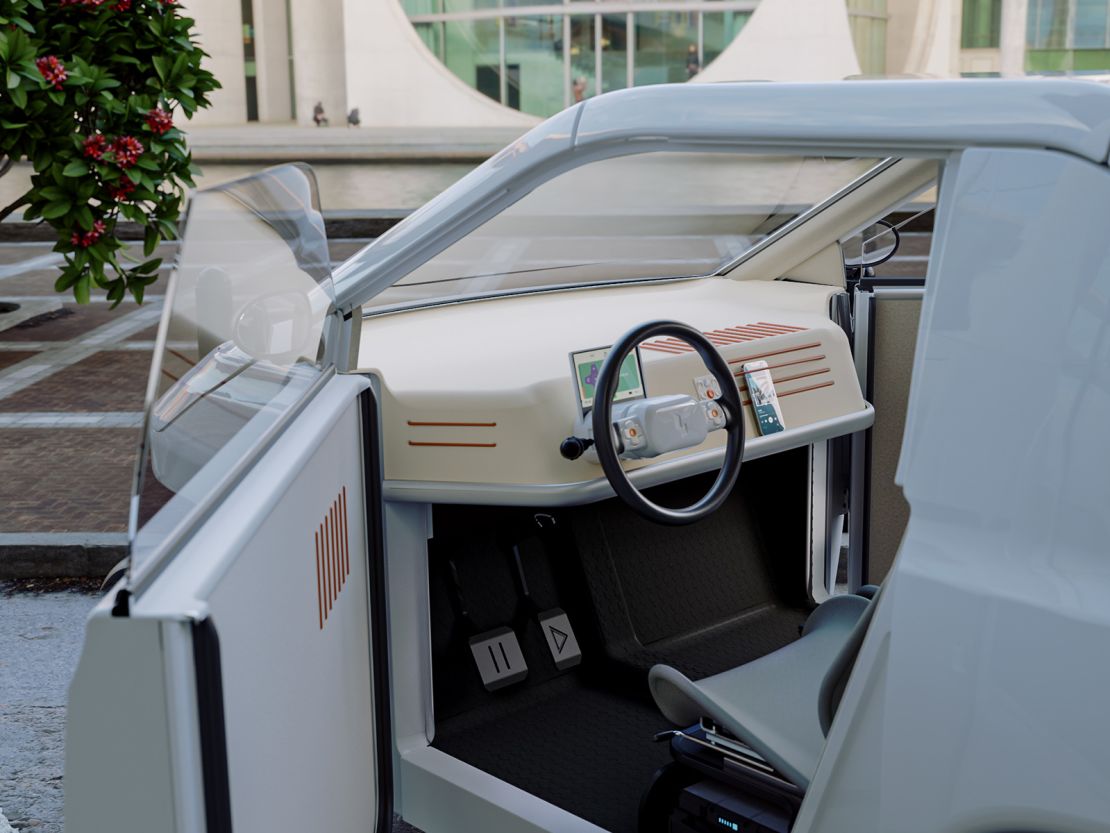
A “Luvly” solution
Luvly O is a “light urban vehicle,” also known as a microcar.
Tiny cars have been zipping around city streets since the 1950s. The iconic BMW Isetta — which weighed just 350 kilograms (770 pounds) — popularized the “bubble car” style that’s continued to inspire modern light vehicle design.
But while microcars look cute, they have a reputation for being unsafe. Their low height, light frames, and limited front crumple zones mean that in accidents, particularly with other cars, drivers can suffer more serious injuries than in passenger cars. What’s more, they are not subject to the same safety standards as regular passenger cars and there’s no requirement for crash testing.
“For light vehicles to compete with cars, and hopefully out-compete cars, they must be safe. People will not accept that you switch from driving an SUV to driving what is essentially a scooter with a shell,” says Lutz.
To address this, Luvly took inspiration from Formula One cars, which are built with a light but strong chassis. Luvly O’s frame has a “sandwich structure” with a layer of aluminum padded on both sides by lightweight plastic foam. Lutz says if the car crashes, the force will be absorbed by the padding and protect the driver.
Although crash testing isn’t mandated, Lutz says that the company is running computer simulations. “It’s not cheap to use computers, but it’s a whole lot cheaper than crashing (real) things,” he says.
Luvly O runs on by two rechargeable 16-kilogram batteries, which can be swapped with another set so the car is always powered.
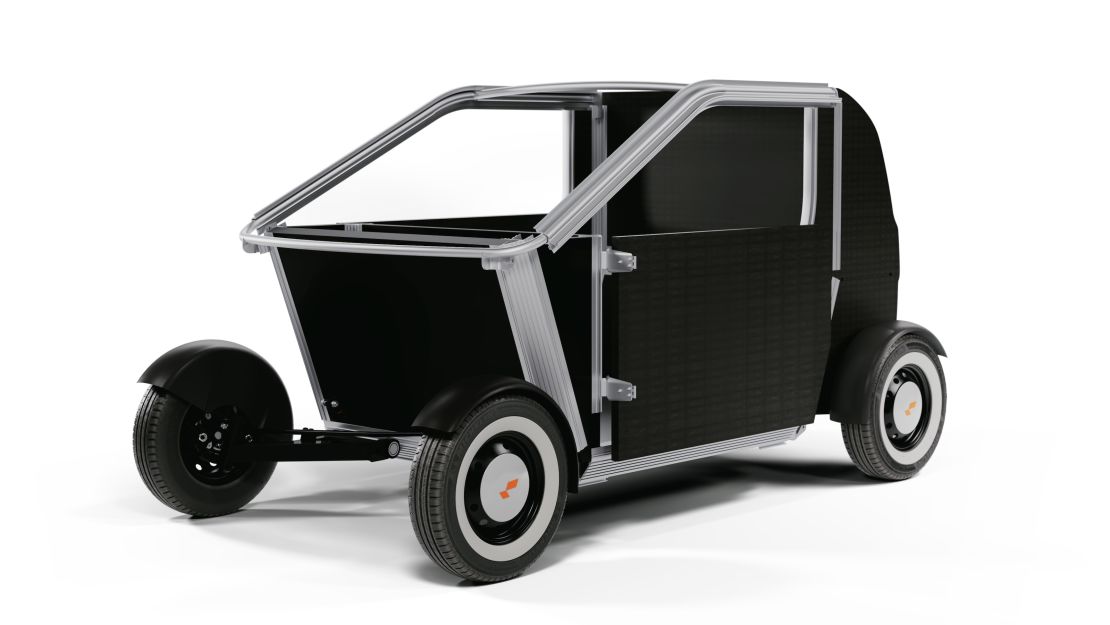
Luvly is still testing the Luvly O prototype but hopes to launch the car next year with a price tag of around €10,000 ($10,500), says Lutz.
However, the microcar isn’t Luvly’s ultimate goal.
Luvly plans to license its patented light vehicle flat-pack framework to other car manufacturers to build their own branded versions.
“We don’t envision that we will be major producers of vehicles, but we anticipate we will be minor producers of vehicles, to advocate for and develop the technology,” says Lutz. “Despite wanting to license this to others, we also wish to stay on top of the game and be the best at our platform.”
Size matters
Despite growing consumer preference for larger car models, Luvly isn’t alone in modernizing the microcar.
In 2020, French automaker Citroën unveiled Ami, a 483-kilogram (1,064-pound), two-seat electric microcar that was replicated by German brand Opel and Italian carmakers Fiat. Last year, Swiss urban vehicle manufacturer Micro launched the Microlino, a “bubble car” that echoes the 1950s Isetta minicar. Like Luvly, Microlino uses a sportscar-inspired chassis to improve safety.
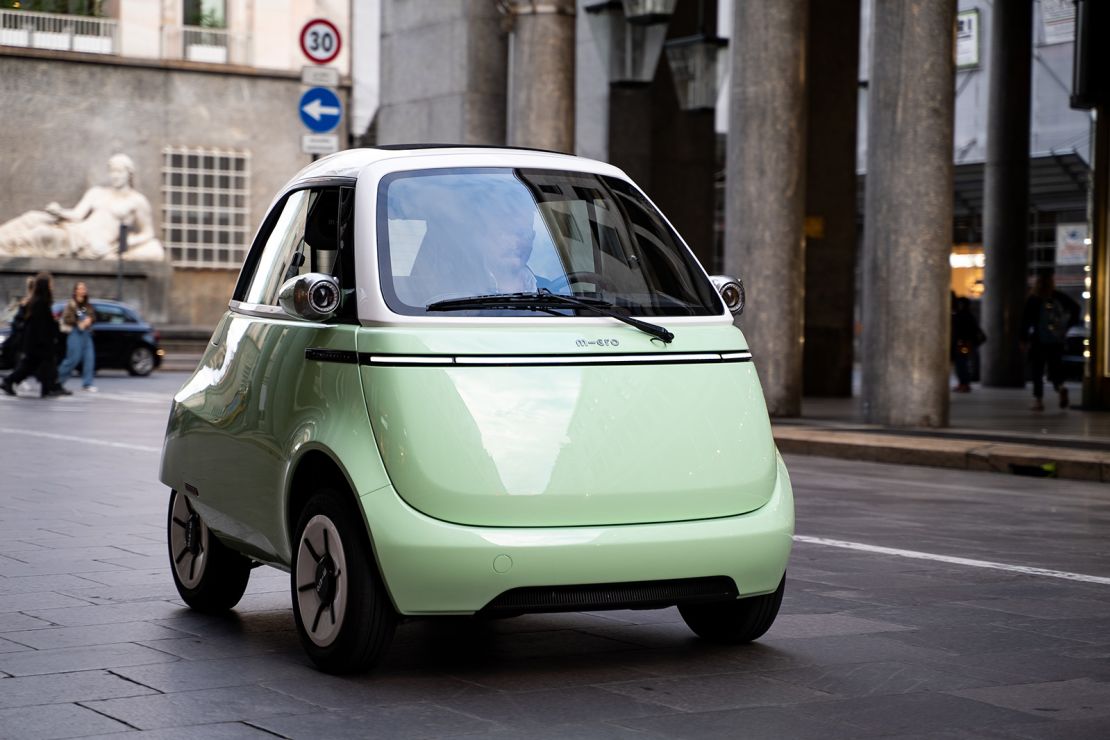
Microcars are easier to maneuver, and they require smaller parking spaces, says Mascha Brost, an expert in light vehicles at the German Aerospace Center.
With an estimated 68% of the global population expected to live in cities by 2050, urban space is at a premium – so smaller cars could free up space for pedestrian use and greenery, which will also reduce the amount of trapped heat in urban areas, Brost adds.
Nearly 11% of all energy-related greenhouse gas emissions come from road passenger vehicles, and while last year saw record-breaking electric car sales, which is helping to cut tailpipe emissions, unless the energy and raw materials used in vehicle production can be reduced, research suggests the overall benefits of EVs is limited.
Resource-light and requiring less energy to manufacture than electric passenger cars, light electric vehicles (LEVs) such as microcars could make a serious dent in transport carbon emissions, says Brost.
“A rather large microcar has only one-third of the emissions for production, compared to an electric passenger car,” says Brost.
In a 2022 study she conducted on car use and LEVs in Germany, Brost discovered that up to half of all mileage could be conducted in light vehicles, including e-bikes, mopeds, and microcars. This would cut transport emissions by 44%.
Smaller is safer
Light vehicles could also improve pedestrian safety, says Brost.
Over the past decade, the number of pedestrians killed on American roads has ticked steadily upwards, according to a study by the research organization Insurance Institute for Highway Safety. And in 2021, pedestrians killed in traffic accidents in the US reached a 40-year high. This increase is partly due to the soaring popularity of sports utility vehicles (SUVs).
“An SUV might be very safe for the person that sits in the car, but maybe not for other road users,” Brost says.
But despite the huge opportunity to replace cars with LEVs in our cities, regulatory and logistical issues are holding them back, says Brost.
Sharing the roads with larger, faster cars isn’t always safe for light vehicles, says Brost, so creating “safe operating conditions” for LEVs, such as lower speed limits or restricted zones, is essential.
Brost points to Peachtree City in Georgia, US, as an example. Here, a 100-mile-long second road network provides safe driving conditions for the town’s 10,000-strong fleet of golf carts and is pedestrian-friendly. While it might not be feasible for every city, it demonstrates the possibilities for light vehicles, she adds.
But to attract consumers, more variety in LEV models is essential, says Brost.
This is where Luvly hopes to add value: inspiring more car manufacturers to develop light urban vehicles with its patented framework.
“The service that cars provide, it’s something good, it’s beautiful, the personal freedom. It’s just not very optimized for what we do,” says Lutz. “(Luvly) delivers the same service with a fraction of the resources. That’s good – that’s what we need to do.”
